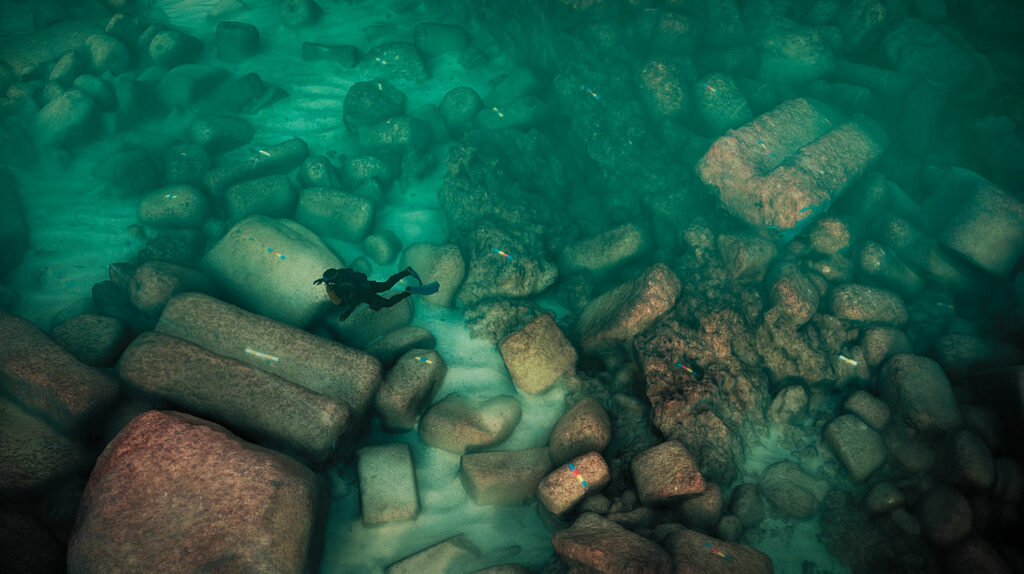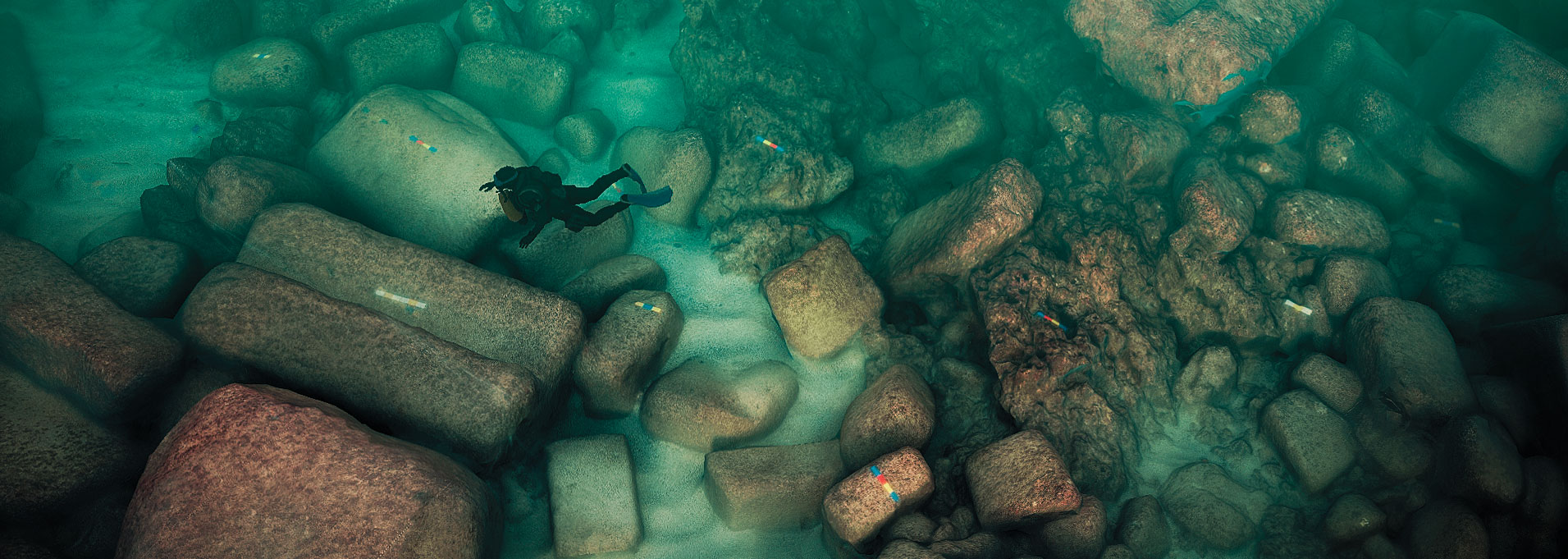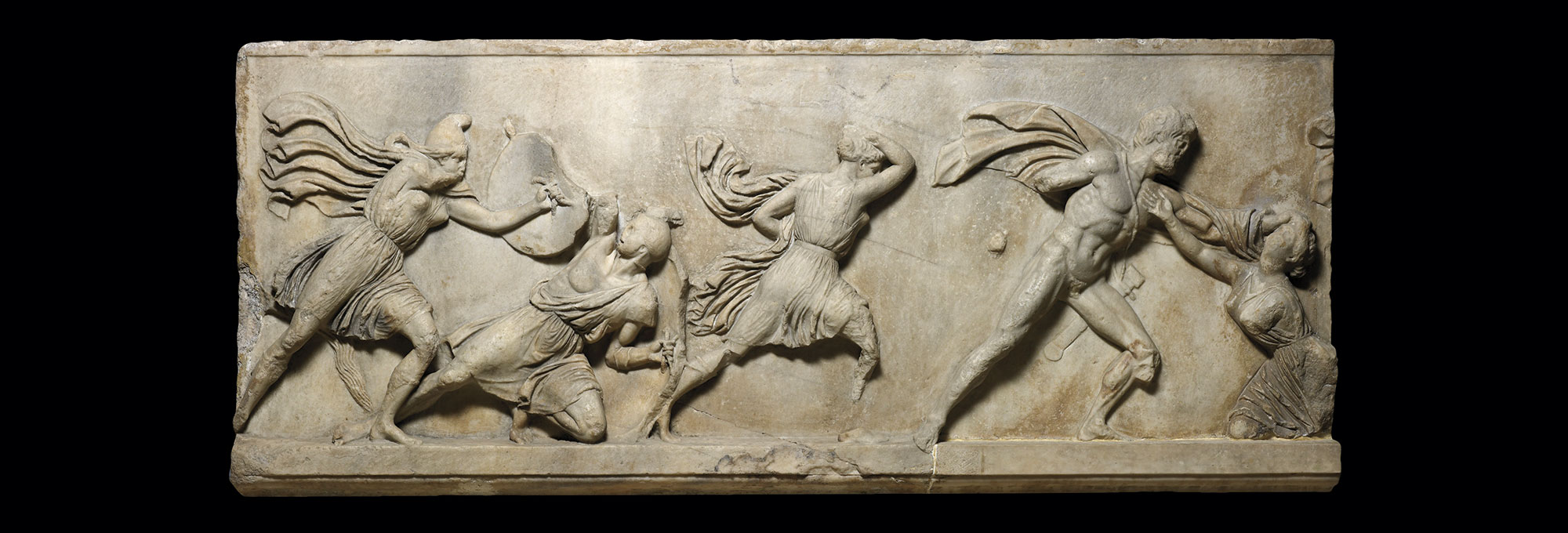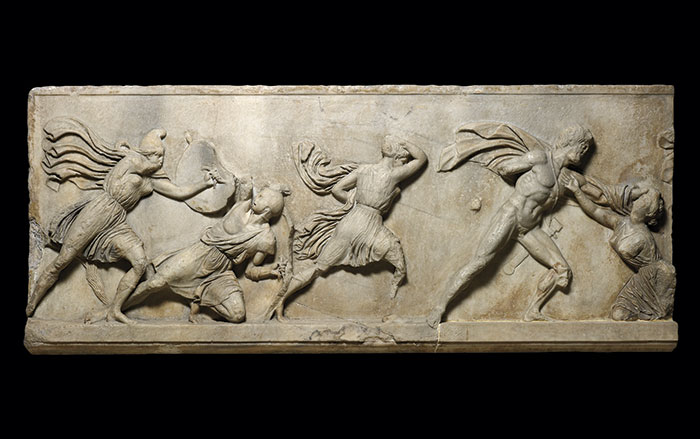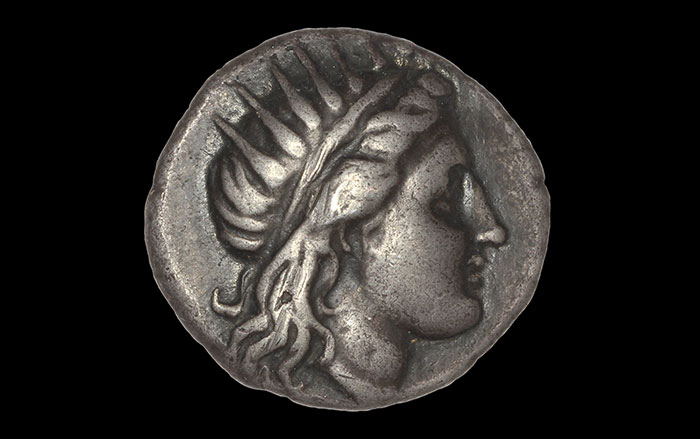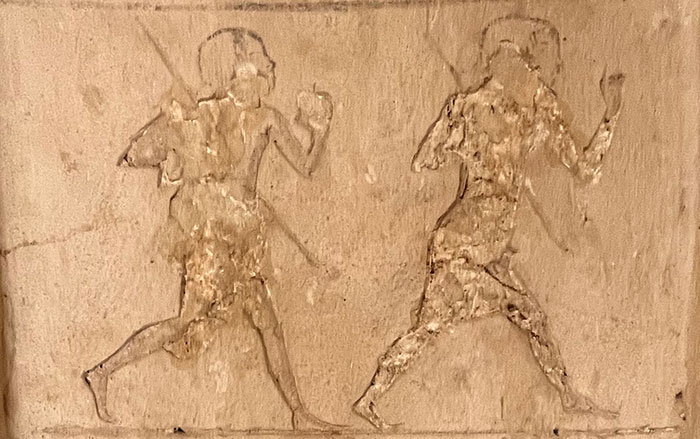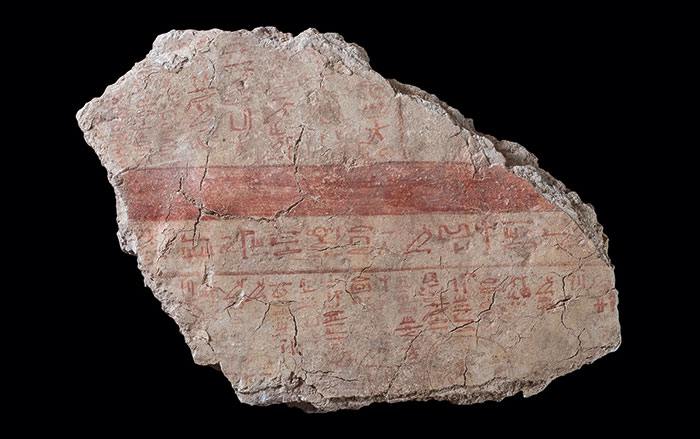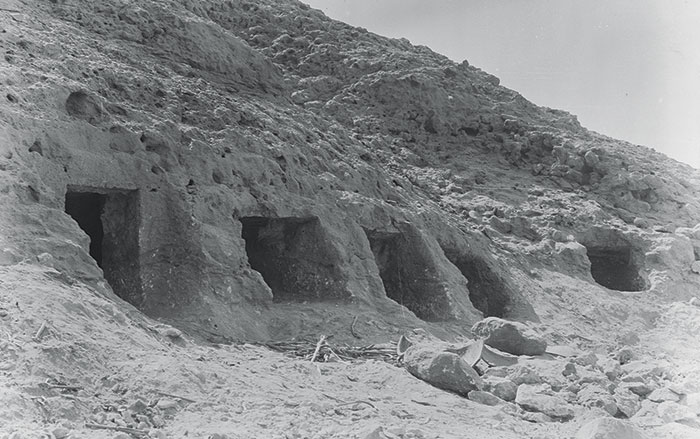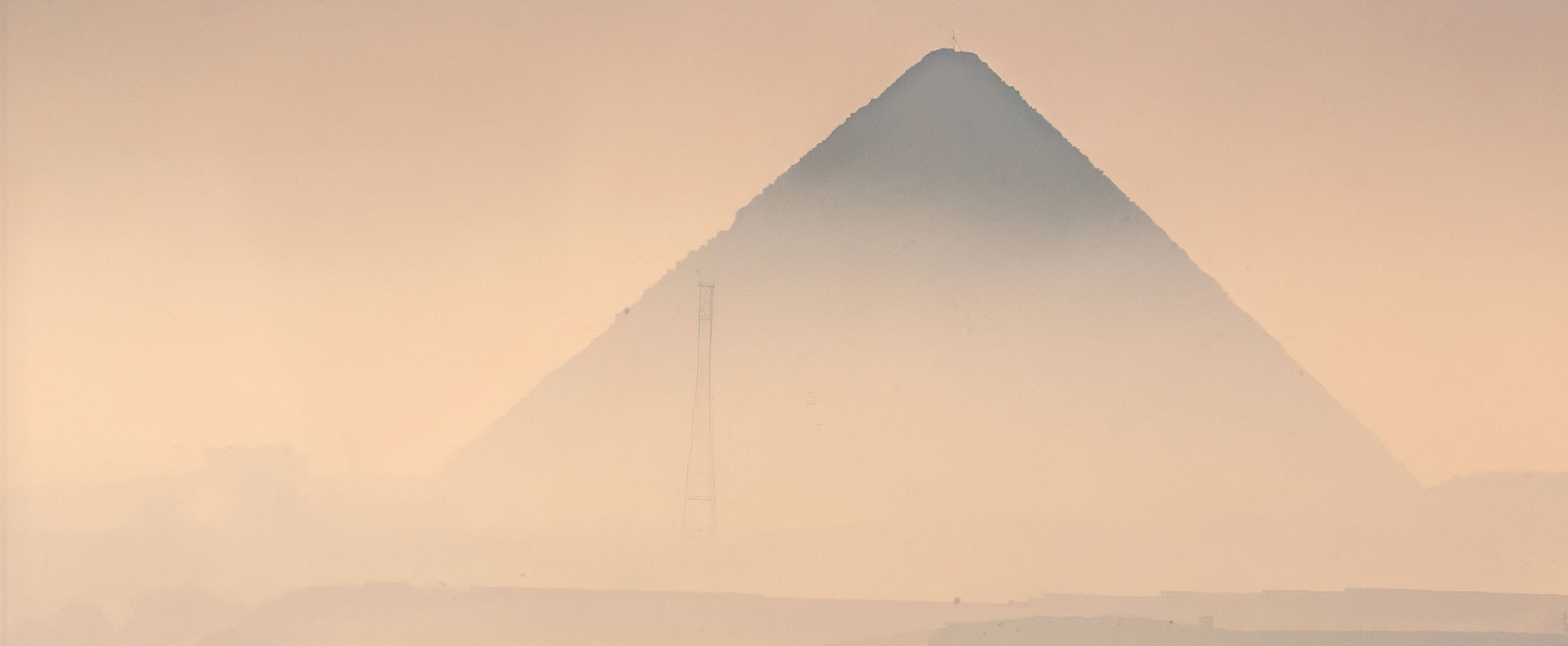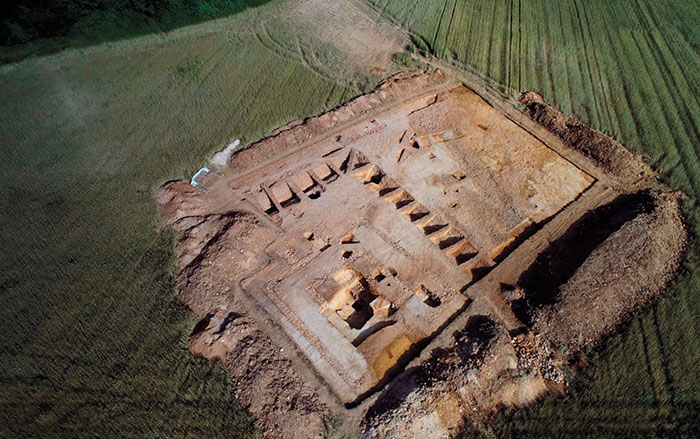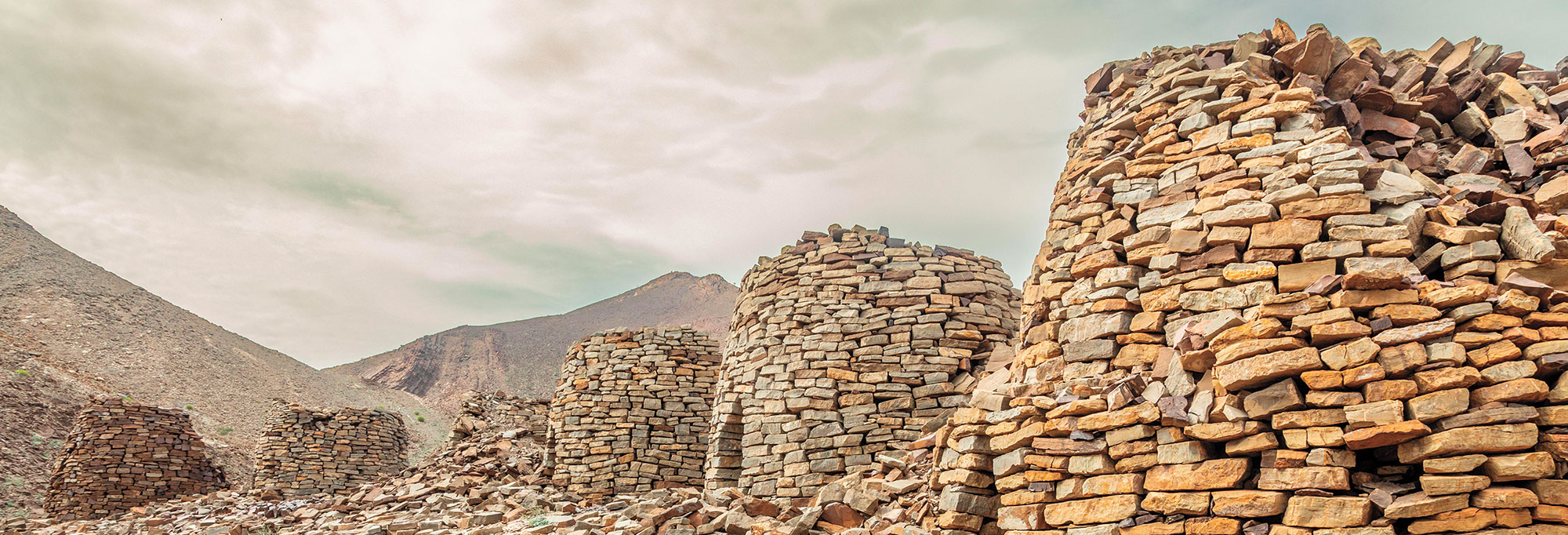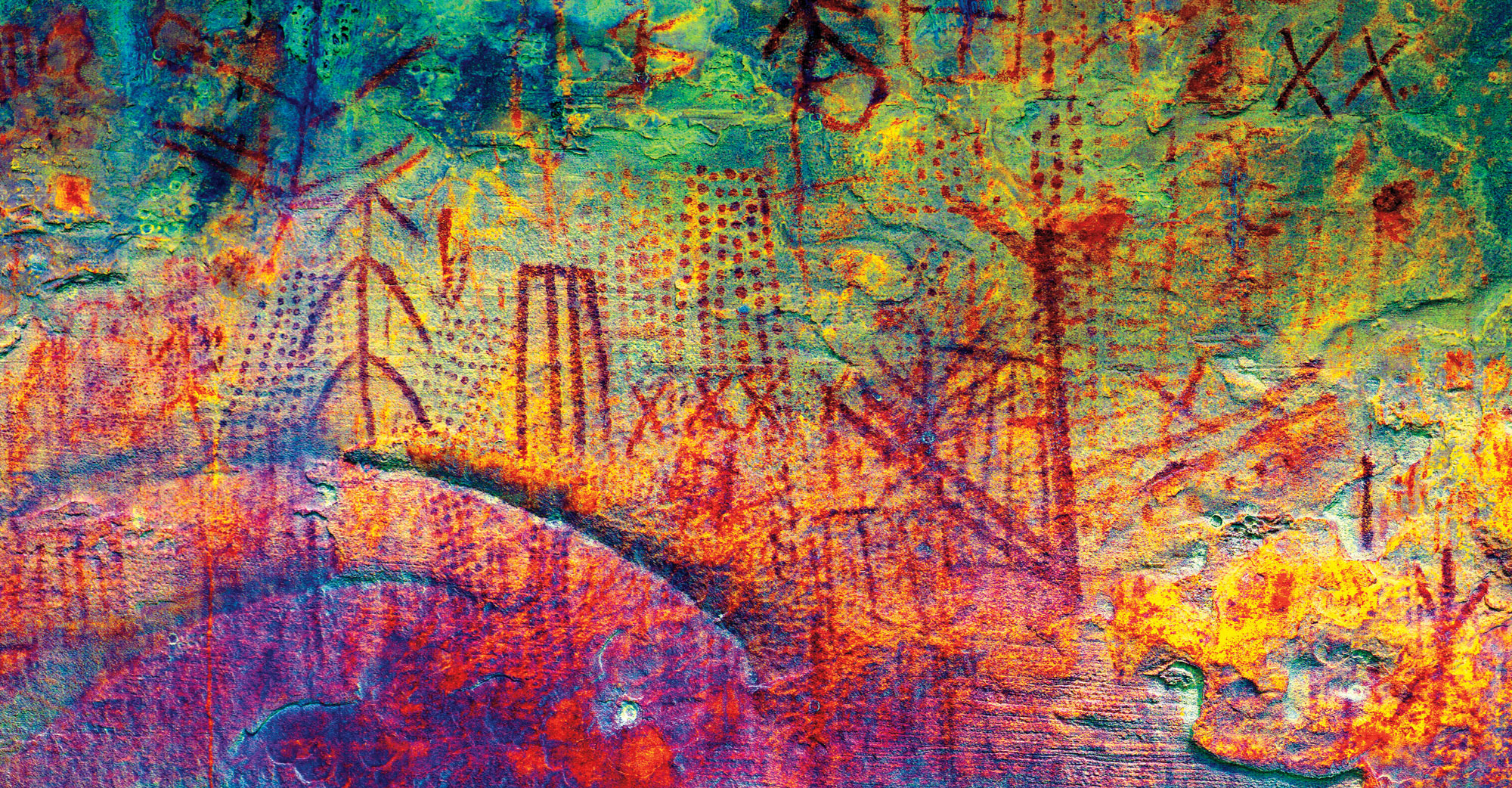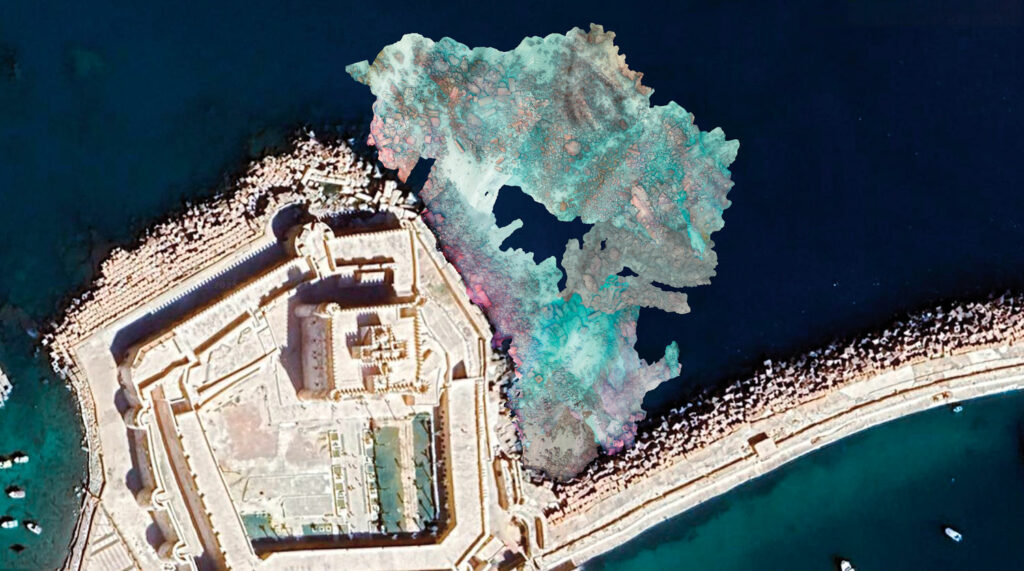
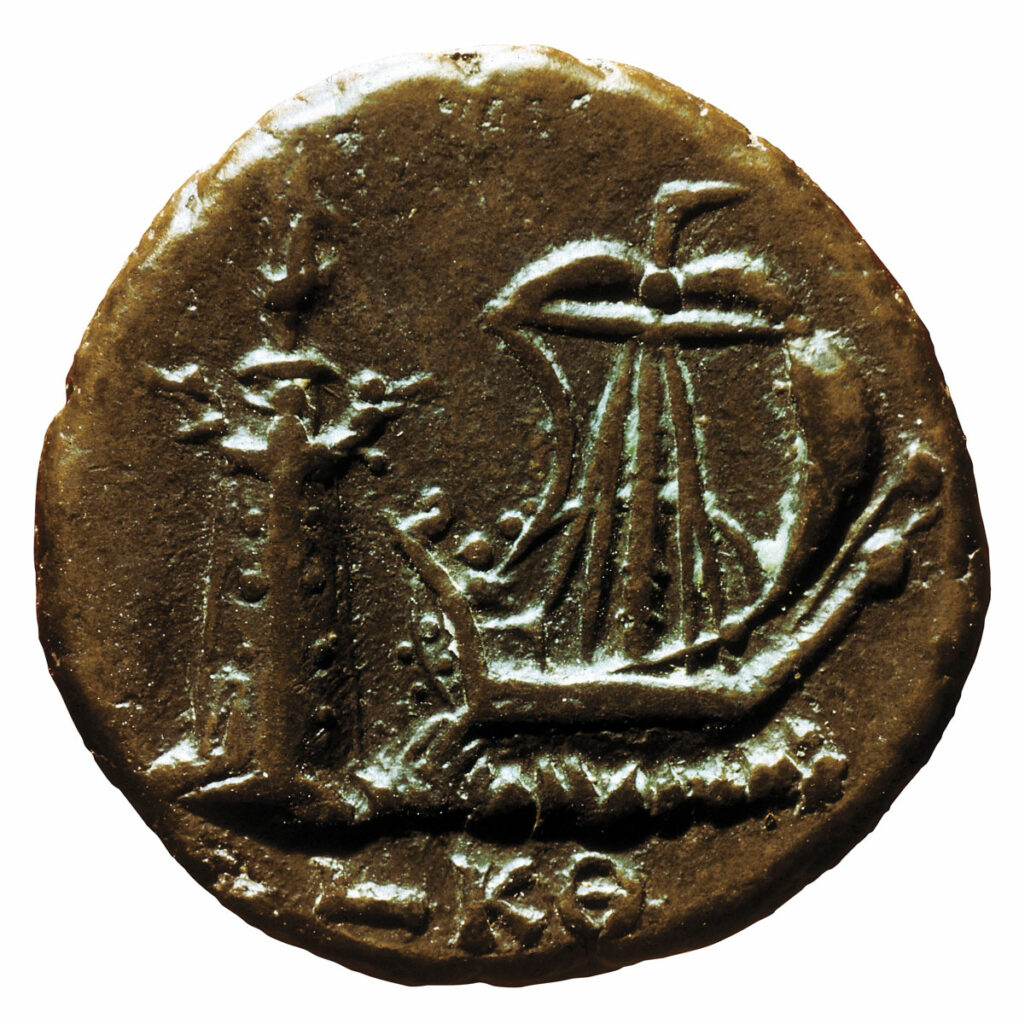
Approaching the port of Alexandria in antiquity could be perilous. The coastline faces the open Mediterranean Sea and is littered with reefs and shallows that could easily sink a ship. The port was also crowded with military and royal vessels. When Ptolemy I (reigned 304–284 b.c.) became king, he began to plan what is thought to be the world’s first monumental lighthouse at the eastern tip of the nearby island of Pharos to aid arriving vessels. Completed 15 years later under Ptolemy II (reigned 285–246 b.c.), the edifice stood nearly 350 feet high. It was surmounted by a flame illuminating the waters around the harbor, ensuring sailors’ safety and advertising the Ptolemaic Dynasty’s power and beneficence for miles. The lighthouse remained standing for some 1,500 years until a series of earthquakes at the start of the fourteenth century weakened it. Over the next century, what remained tumbled to the seafloor.
The first remnants of the lighthouse weren’t located until 1960, and excavations began in 1994. Since then, archaeologists have made many discoveries, including more than 2,000 metal clamps used to hold the monument’s enormous stone blocks together. “This was very surprising since usually ancient metal is repurposed,” says archaeologist Isabelle Hairy of the Center for Alexandrian Studies and France’s National Center for Scientific Research. “These clamps help explain how the immense structure was built in only fifteen years, because this is a much faster method than using mortar.” Early on, Hairy also identified immense stone fragments of the lighthouse’s main door.
For the last decade or so, photogrammetry—a method that uses thousands of 2D photographs to create a 3D model—has been an invaluable part of the team’s work. They have used this method to digitize the site’s expansive underwater surface. Thus far, they have processed 143,000 images and recorded 70 percent of the site, including more than 5,000 blocks—some weighing as much as 60 tons—from the lighthouse and other ancient buildings that once stood on the shore. Blocks like those belonging to the door used to take several days to draw by hand, but can now be virtually reconstructed in minutes. “Photogrammetry was also a discovery,” says Hairy. “The visibility underwater is extremely bad, the seafloor is very uneven, and there’s no stratigraphy at all, so with this incredibly detailed view, we can really begin to understand the site.”
